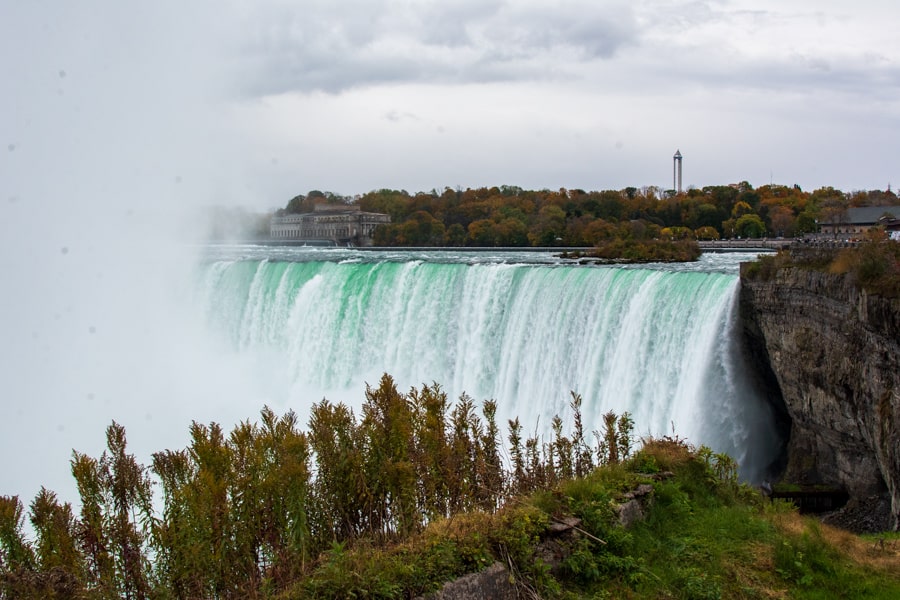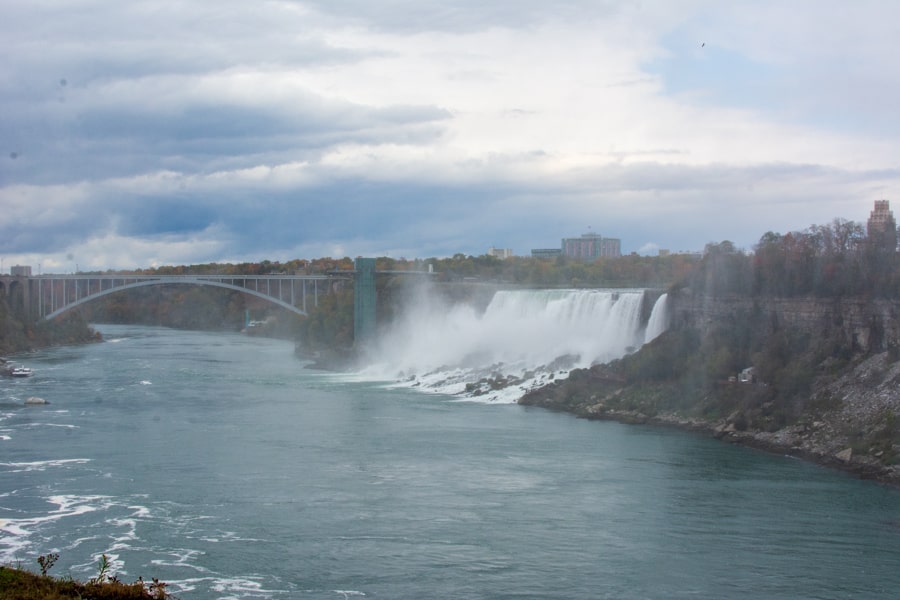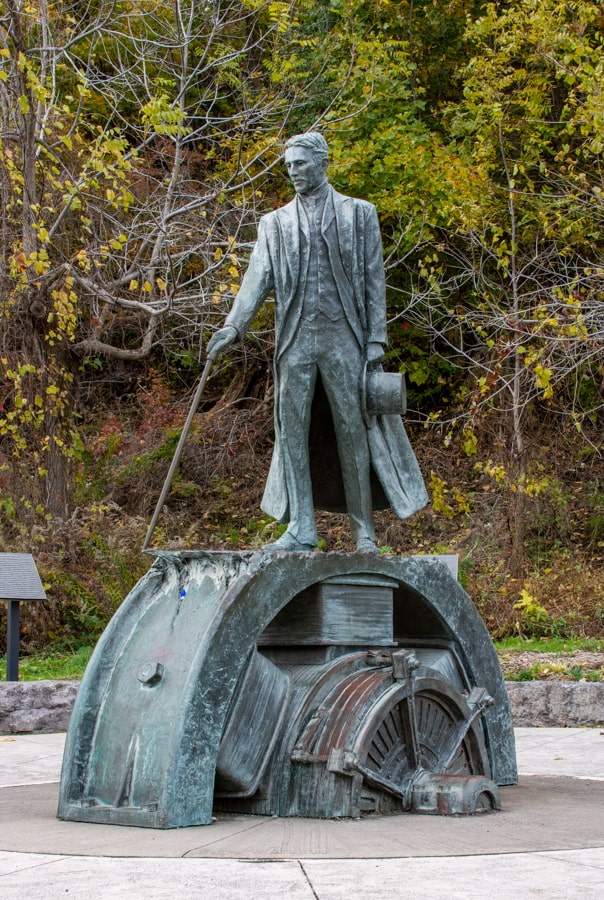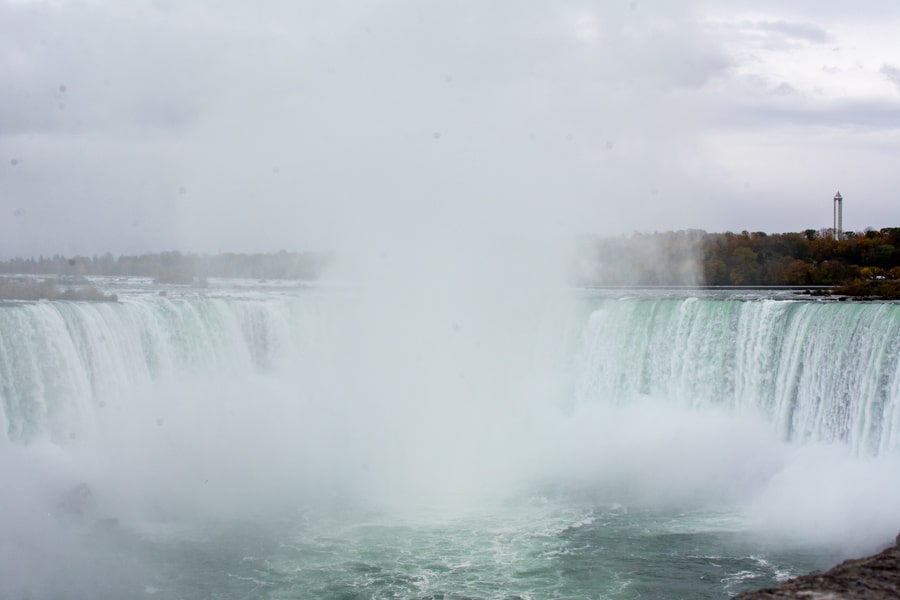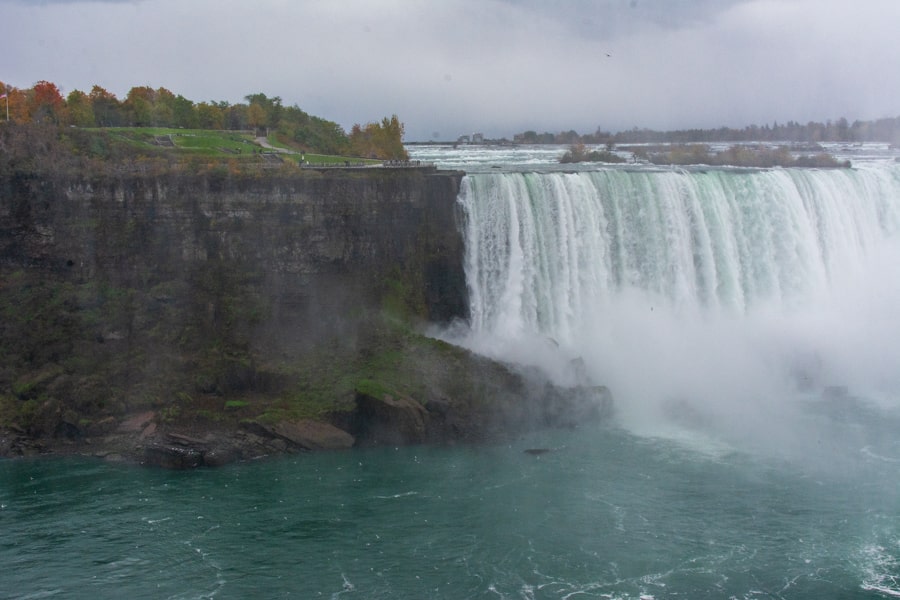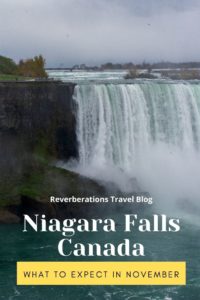Niagara Falls is one of those iconic wonders with instant name recognition. Like the Eiffel Tower or the Great Pyramids of Giza. But unlike those timeless bucket list favorites, the falls are not a feat of human engineering but rather an act of Mother Nature.
While the waterfalls do straddle the United States-Canada border, Niagara Falls Canada offers a stunning view of all three of the falls that make up the eponymous natural attraction. It is one that wows with sheer volume. Forget the novelties of walking a tightrope over the gushing water or riding down in a barrel.
There is something quite special and unique that the falls offer with each changing season. Niagara Falls in November — or the off-season in general — means fewer crowds and colder temperatures. But no matter when you visit, the general experience of the falls is the same. Whenever you want to visit, I have some great tips for what to expect.
A Brief History
The Niagara River flows north, starting at Lake Erie and feeding into Lake Ontario. Along the way, the river passes through the Niagara Gorge, creating three separate falls. A relatively large island, Goat Island, sits in the middle of the river along with a number of smaller islands. It’s in and around these islands that the falls are created.
The spectacular wonder that is Niagara Falls is comprised of three falls: Horseshoe Falls, American Falls, and Bridal Veil Falls. The latter two waterfalls are in the United States. Bridal Veil is sandwiched between two islands, Goat Island and Luna Island; American Falls is alongside Goat Island. The largest waterfall, Horseshoe Falls, is primarily, although not completely, in Canada.
Visitors can get a different point of view from each side of the international divide. On the Canadian side, the Niagara Parks Commission was founded to manage and protect the falls and the area surrounding the river since the 19th century.
Experiencing Niagara Falls Canada
A visit to the famous falls is everything that you would expect and yet, at the same time, it is nothing like you might expect. Strike all those movie-like images or thoughts of magicians or daredevils in barrels. This is the real deal.
To reach the falls, most will approach along the Niagara Parkway, a scenic boulevard that is approximately 34-miles long and runs the entirety of the Canadian side of the river. This arrival is a bit of a tease. The river seems strong but calm with no hint of what we all know is coming. One of the first landmarks that catch the eye when approaching from the south is that of a shipwreck from 1918, the Iron Scow.
Once you arrive at the falls, they are hard to miss despite being slightly below eye level from the street. Not far downstream you can see American Falls and Bridal Veil Falls.
Table Rock Welcome Centre is a good starting spot for any visit. It stands on the parkway directly opposite Horseshoe Falls and houses a visitor center, restrooms, restaurants, and gift shops. Although it is set across the street from the falls, the multi-story building offers nice views that are especially enjoyable on blustery or wet days.
When you do venture across the parkway to the edge of the gorge, it is almost shocking how close you can get to the falls. Little more than a low stonewall and fence surround the gorge and keep visitors on the ground.
From this perspective, the falls do not look perhaps quite as tall as you may have expected. But the sheer volume of water gushing over the falls is incredible. The mist that rises off the green-blue water really adds to the atmosphere and fogs up camera lenses and smartphones. Depending on just how cold it is, you may even start to see some freezing, although a total freeze is rare.
During the winter, the popular tourist boats do not run trips up the river and to the falls. Without this additional reference point for scale, it can all blend together. But that is the beauty of Niagara Falls in November. The relative quiet of fewer crowds and attractions means that the focus is squarely on this feat of Mother Nature.
A sidewalk runs along the parkway, allowing you to take a stroll along the river gorge and enjoy all three of the falls from different angles as well as a statue of scientist Nikola Tesla.
When compared to other waterfalls in neighboring regions of Canada, such as Quebec’s Canyon Saint-Anne, the power of the falls is palpable.
Other Niagara Canada Attractions
While you can not take a boat towards the falls during the off-season, you can still get up close and personal with that powerful rushing water. Journey Behind the Falls delivers on the promise of the name, allowing you special access via the infrastructure behind Horseshoe Falls for a truly close experience. If you are looking for more adventure, you can take a zipline to the falls.
From Niagara-on-the-Lake near Lake Ontario to Old Fort Erie near Buffalo, the Niagara Parks Commission manages a number of attractions. Some are directly related to the falls while others are important historic landmarks or parks. You could easily make a road trip along the parkway and stop off to visit them all. Closest on the Niagara Falls Canada side is a relatively new Niagara Parks Power Station Museum, documenting the historic engineering marvel that first captured hydroelectric energy for Ontario.
Like the rings of an onion, there is a popular commercial area just outside of the park surrounding the falls. Restaurants and hotels dot the area overlooking the gorge with towers and hotels soaring up to the sky in order to get a peek at those famous falls. The most prominent is the Skylon Tower, an observation deck that includes a rotating dining room. A funicular railway links the park with the busier, more commercial area above.
Getting There
Reaching Niagara Falls Canada is easiest by car. The falls make an excellent day trip from Toronto, which is roughly an hour away by car.
For those relying on public transit, there are several bus-related options. WEGO is specifically targeted to tourists, connecting the falls and other attractions with hotels. There is also a city bus option and a regional bus option.
Niagara Falls Border Crossing
As obvious as it sounds, it may bear repeating. In order to access Niagara Falls Canada, visitors have to be in Canada. When visiting from the United States, the most common Niagara Falls border crossing options are the Peace Bridge outside of Buffalo, NY, and Rainbow International Bridge in Niagara Falls, NY. Both bridges have tolls when entering from the US.
The standard documentation is also required for entering Canada. At a minimum, this means a passport, however, additional travel restrictions may be in place.
Parking
All of the parking lots surrounding the falls and adjacent attractions all have a fee.
If your main interest is seeing the falls, the most convenient option is the Falls Parking (Lot A) directly next to the Table Rock Centre and Horseshoe Falls. The lot is gated and you pay upon exiting depending on how long you were parked. Stretching along the riverfront, the park is quite large.
For visitors looking to enjoy some of the other nearby Niagara Parks attractions, many of them have their own dedicated parking lots.
Save this post for later with Pinterest!
All photos, as well as opinions are my own. This post contains affiliate links.
